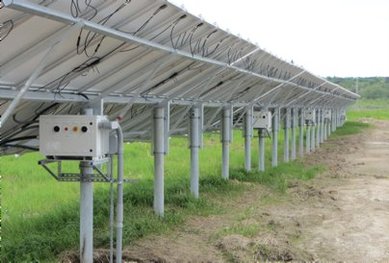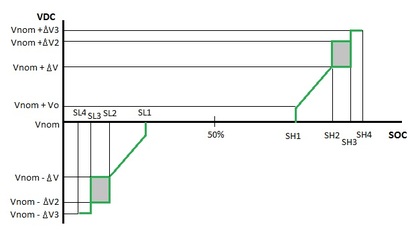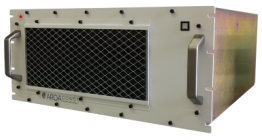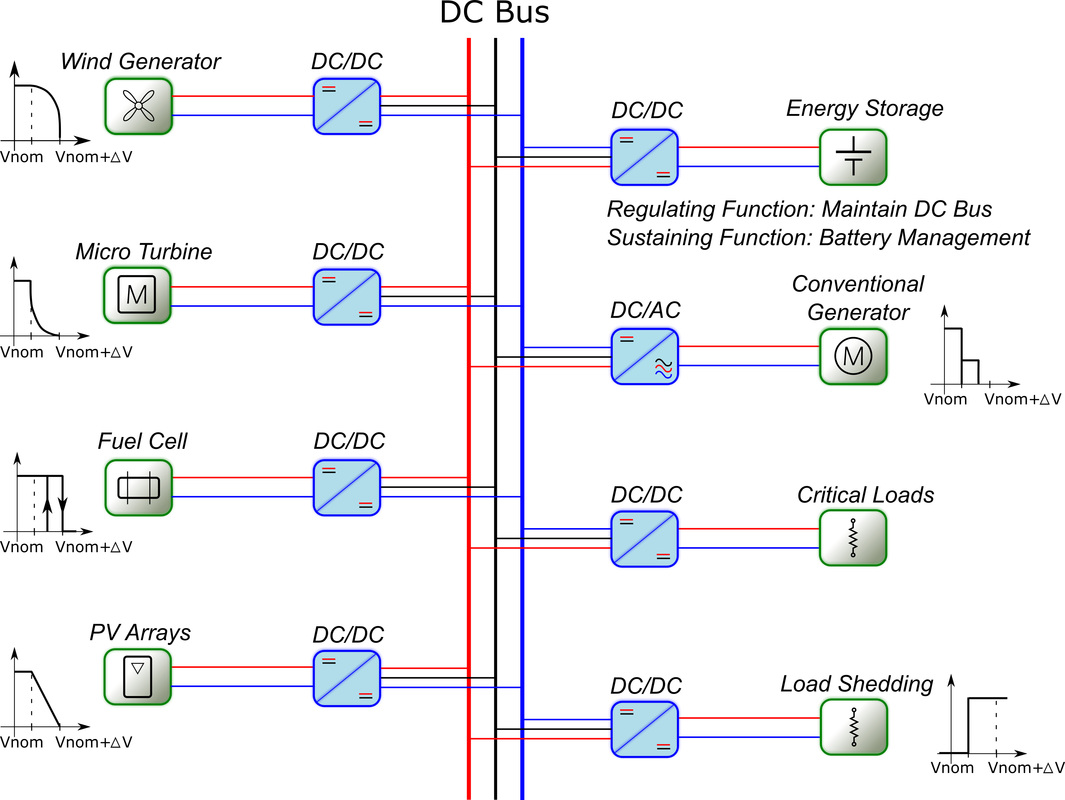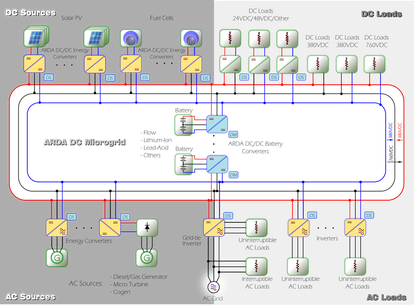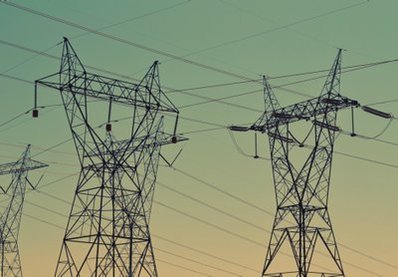ARDA DC Microgrid Platform
Microgrid Control
|
ARDA DC Microgrid Platform's proprietary Controls use DC bus Voltage as the communication means.
Energy Storage is the sole Microgrid Manager. It simultaneously performs the Power and Energy Management Control functions through fast responding ARDA Battery DC-DC Converters. The Microgrid Control has a distributed character whereby Sources and Loads respond independently from each other and from the Microgrid Manager with their own internal algorithms. This functionality is provided by slave controllers that are either embedded in the Sources and Loads or provided as add-ons. The AC Grid and the interfacing grid tie inverter do not play any Management role, they are simply another Source/Load. |
ARDA Power has deployed versions of the Microgrid Controls at a 60MW Solar plant in Ontario, at ARDA Power’s main office, and in Burlington Project.
|
Control with NO wired or wireless Communications
1st Control Layer |
REGULATING Function: Maintain DC bus Voltage at a set pointThe Energy Storage system maintains DC bus Voltage set point using very fast responses to variances in DC bus voltage.
Note: DC bus signaling (droop) control methods are not used by the Platform for Regulating Function. WHO: exclusively Energy Storage
The system’s exclusive use of Energy Storage for the Regulating Function (without assistance form other components including the grid-tie converter) provides for a single mode of operation in both grid-tied and off-grid operation. This simplifies system design and operation and improves reliability and resiliency.
The grid tie DC-AC converter regulates the DC bus only in the case of failure of the Energy Storage, representing an abnormal bypass operation mode.
HOW: fast The Microgrid Control's Regulating Function simplifies system stability and the commissioning effort, but requires a fast response.
PLUG-and-PLAY enabler The Regulating function of the ARDA DC Microgrid Platform's Control is one of the Plug-and-Play capability enablers.
|
2nd Control Layer |
SUSTAINING Function: Energy Balance through Battery ManagementThe Energy Storage system is also responsible for the Control's Sustaining Function. The Sustaining Function provides for the Energy Balance between Power Production and Power Consumption through Battery Management. In this sense, the Energy Storage system is the Energy Manager of the Microgrid.
Energy Storage is the Microgrid's Energy Manager The Sustaining Function (unlike Regulating Function) uses so called DC bus signaling:
STEP 1: The Energy Manager "blindly" commands Sources and Loads using slow changes in the DC bus Voltage set point.
STEP 2: Sources and Loads use average measured DC bus voltage (rather than instantaneous bus voltage) to "blindly" understand and respond to the Energy Manager's command following individual internal algorithms. WHO: Energy Storage "blindly" Commands, other Elements "blindly" Respond Here "Blindness" is a benefit, not a handicap. In STEP 1 the Energy Storage does not communicate with Sources or Loads since it knows that these elements will fulfill its "expectations". In STEP 2 Loads and Sources automatically respond to a change in DC bus Voltage without communicating with the Microgrid Manager and with each other.
Balanced Microgrid - State of Charge remains within the Preferred Boundaries
HOW: slow via DC bus signaling
PLUG-and-PLAY enabler The Sustaining function of the ARDA DC Microgrid Platform's Control is one of the Plug-and-Play capability enablers.
|
Self CalibrationA self calibration algorithm executed by the Energy Storage uses a known DC voltage to calibrate all the other components connected to the bus. |
ARDA Battery DC-DC ConverterBoth Regulatory (fast) and Sustaining (slow) tasks have to be done simultaneously: |
3rd Control Layer |
OPTIMIZING Functions: Optimize Operating Cost and PerformanceThe 3rd Microgrid Control's layer is represented by individual optimization Algorithms (patterns) of the Microgrid's components like Sources, Loads and AC Grid in their power responses to the Energy Manager's commands. These Algorithms optimize such things as:
HOW: (re)program a Source or Load with no change effect on the Microgrid Any changes to to the individual Algorithms, addition or removal of a Component, do not effect the rest of the Microgrid because:
|
Source and Loads ConvertersPower converters used for Sources and Loads only need to be provided with the capability to adjust their production/consumption based on a control signal. Third-party Energy ManagementCustomers may also want to employ third party management systems that use price, weather and other external data to optimize system performance including real time decisions on the import and export of energy to and from the external AC Grid. |
Master and Response ControllersThe Microgrid's Virtual Master Controller and Response Controllers both have a distributed architecture. |
AC Grid - just another Source or LoadIn the ARDA DC Microgrid Platform, the AC Grid and its interfacing grid tie DC-AC converter play NO Management role. Instead the AC Grid is simply a bidirectional device that can operate as a Source or a Load on our Platform. |

